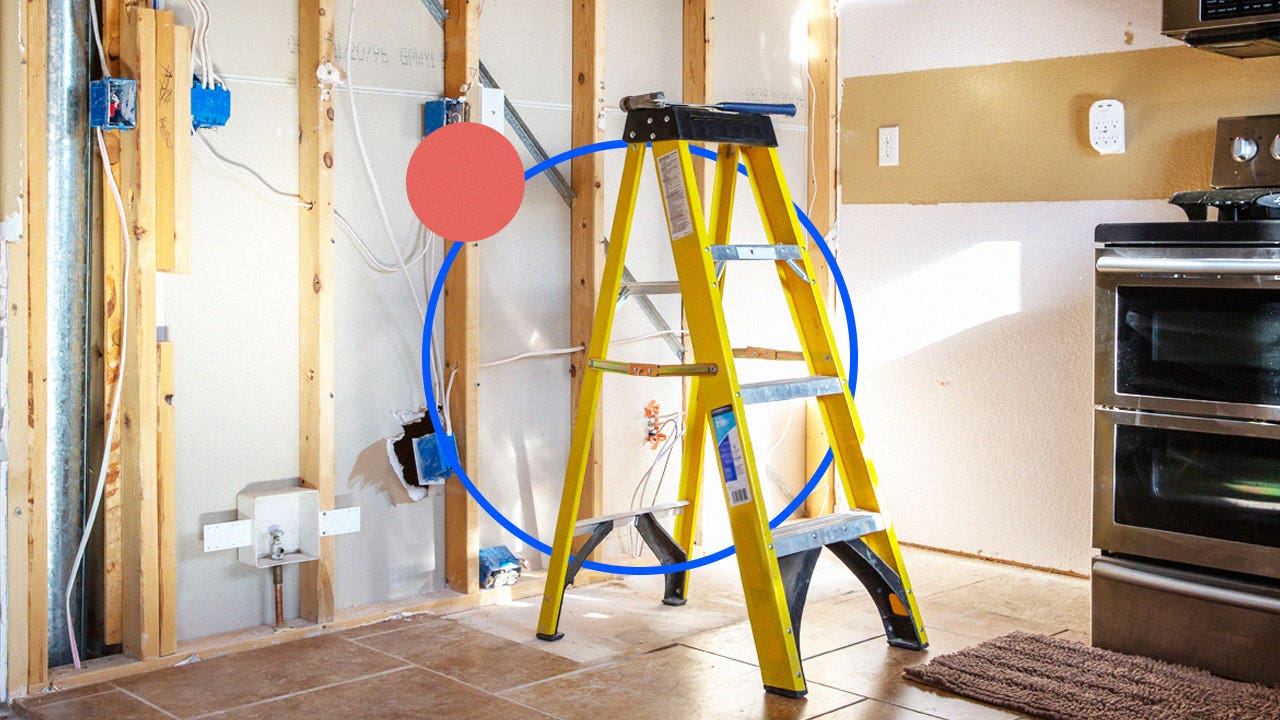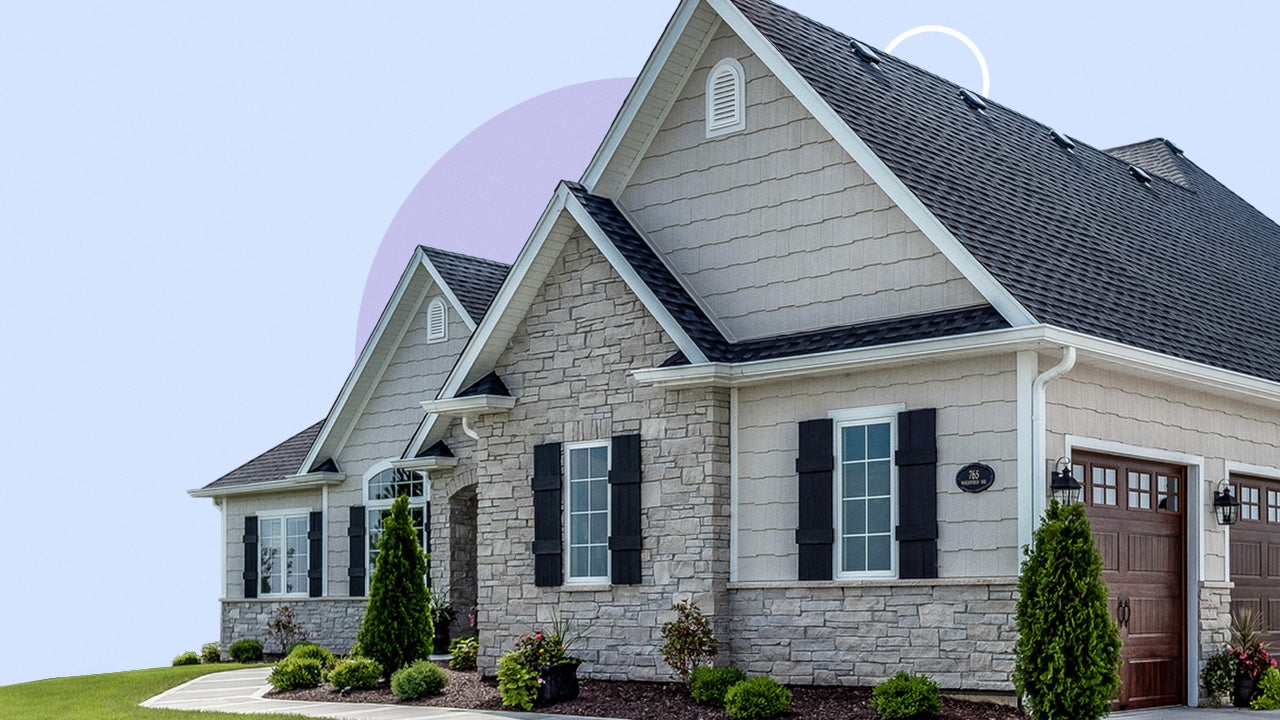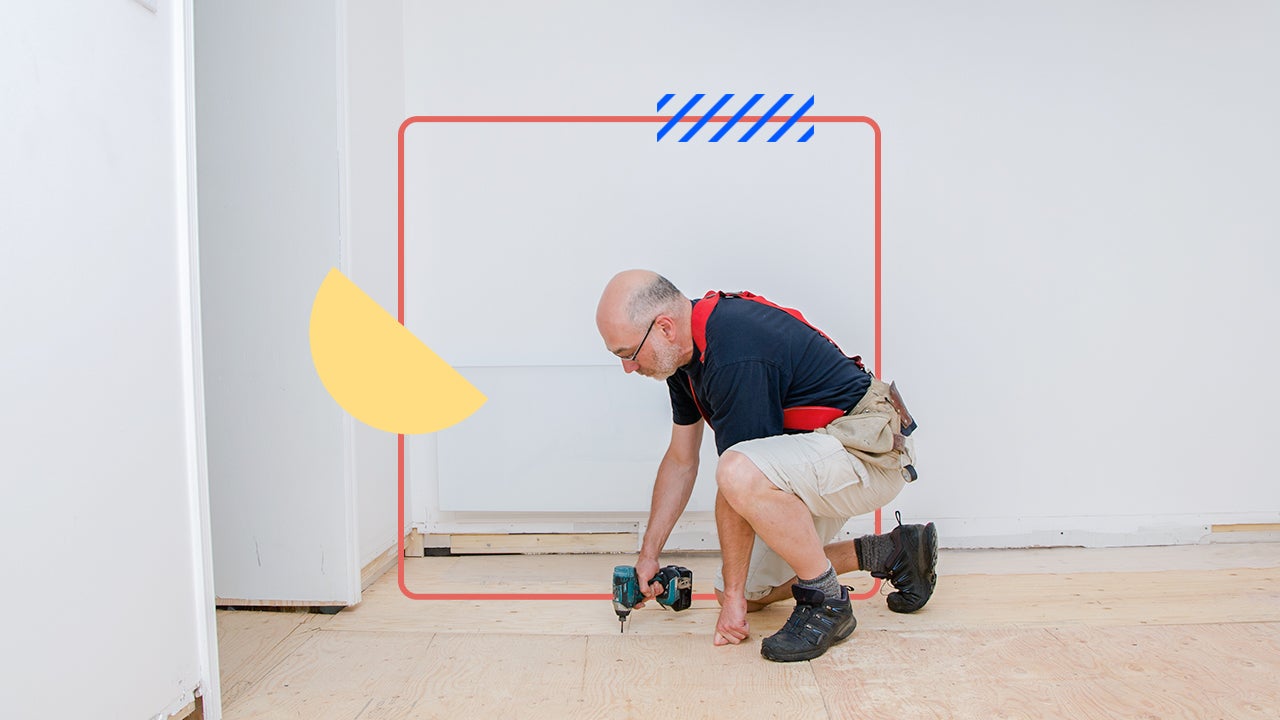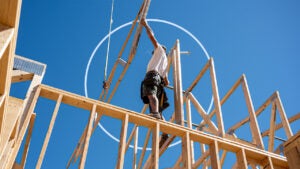How much does it cost to frame a wall?

Building an interior wall in your home has several benefits. Not only can it improve your living experience, it can also increase your home’s resale value, depending on the sort of new room or area it creates. In building lingo, you often see this sort of interior construction project referred to as “framing a wall.”
The average cost of framing an interior wall can be anywhere from $7 to $16 per square foot, according to HomeAdvisor. But that’s only part of the project. There are many additional components involved in completing your wall, including the installation of drywall, the addition of openings and electrical outlets, and the type of finish, says Mischa Fisher, chief economist for home improvement site Angi. These factors can boost the price tag to $20 to $30 per linear foot.
All told, installing a wall can cost $2,500 to $6,100, according to the home maintenance site Thumbtack. Let’s look more closely into the costs of adding a wall to a room, ways to save money and how to finance your wall-framing project.
Key takeaways
- The basic cost of framing a wall runs $7-16 per square foot, but additional costs to complete it can double the overall price
- All told, adding an interior wall typically runs from 2,500 to $6,100
- Factors influencing wall-framing costs include size, materials for basic parts and finishes, the presence of windows or doors and labor
- Adding an interior wall in your home can be a way to create additional rooms or improve aesthetics without the cost or complexity of a full-on addition or renovation
What’s in an interior wall?
Before getting into the costs of building a wall, we should define a few terms. All interior walls consist of four parts:
- Bottom plate: This horizontal plate is affixed to the floor, using it for support.
- Top plate: Also called a two-by-four, the top plate runs parallel to the bottom plate and affixes the vertical studs to the ceiling.
- Studs: Spaced apart every 16 inches and connecting the two plates, studs are vertical two-by-four planks that provide definition for drywall and finish surfaces.
- Drywall: A board made of layers of material bonded to a gypsum plaster core, drywall is fastened to both sides of the wall to anchor and cover it — its outer skin, so to speak.
How much does it cost to build a wall?
While interior wall installations generally run in the low four figures, the range can be huge: anywhere from $973 to $8,000, according to HomeAdvisor. That covers not only the labor required but also supplies, such as connectors, fasteners, and dimensional lumber. Pricing also typically includes necessary consultations, preparation, setup, and cleanup, as well as disposal of extra materials.
When estimating the cost to build a wall, you need to consider first and foremost its overall size. “In addition, load-bearing walls will cost more than non-load-bearing, since they need to meet stud spacing requirements,” says Fisher. “Openings, such as doorways or windows, will also add to the cost.”
Cost considerations when building a wall
There are many factors to consider when trying to determine how much a wall will cost.
Wall size
Size does matter. The biggest factor influencing the cost to build a wall is its dimensions: length, height and thickness.
To calculate the size of your wall in square feet, multiply the length of the desired wall by the ceiling height. You’ll also need to know how thick the wall will be. This typically ranges from 2.5 inches to 6 inches. The thicker the wall, the more expensive it will be, but thicker walls have better insulation and sound protection between rooms.
“The size of the wall is a major factor in determining cost because it impacts the quantity of materials and the labor time required to complete the project,” says Fisher.
Electrical work
Most – if not all – of the interior walls in your home contain some sort of electrical wiring, which powers your outlets, lights, and appliances. You may have to hire an electrician depending on the complexity of the electrical work needed, which can easily increase the cost to frame a wall. The cost of electrical work ranges from $40 and $100 per hour, with the first hour a bit higher at around $150, says Fisher. For two pros, the cost averages around $175 per hour.
“Also keep in mind your material costs, which tend to run from $6 to $8 per foot when wiring a house,” says Fisher. “Depending on what you need and its complexity, electricians may opt for a flat rate for the total project. The total cost will depend on the size and specifics.”
Windows, doors, or a pass-through
The cost to frame a wall will usually increase with each window or door that is added. This is because the studs that support the interior wall structure must be taken out and the weight redistributed to make room for each opening. If you’re adding a bedroom, you’ll probably need at least one door, which will increase the project costs.
Wall openings tend to cost around $120 to $200 per opening for a simple door or window. However, an elaborate wall arch may range from $1,000 to $5,000 depending on size and load-bearing properties, says Fisher. Other styles of doors, such as pocket doors, can be anywhere from $100 to $2,500 per door. “Ultimately, the cost to install a door in your new wall will vary based on the style, material and location of your door, as well as trim, hinges and hardware and other add-ons,” says Fisher.
Installing multiple windows averages around $5,700 per project.
Labor: prep, construction, and cleanup
Framing a wall might seem like a simple job, but it can involve a variety of different skill sets and laborers. You’ll need a few different people to finish the job, each charging a different rate. Contractors’ rates can vary tremendously from region to region, of course, but here are national averages based on the Bureau of Labor Statistics’ latest data.
| Trade | Avg. cost per hour |
|---|---|
| Basic construction | $21.22 |
| Electrician | $30.44 |
| Plumber | $30.46 |
| Glazer | $24.98 |
| Painter | $22.66 |
Source: U.S. Bureau of Labor Statistics
Not every wall requires all types of labor. For example, an interior wall with no windows probably won’t need a glazer. However, expect to need painting and electrical outlets for every wall you put up.
Permits
Depending on local law and building codes, you might need to get permits before you can begin work. The cost of a permit will vary significantly from town to town. For example, the city of Malden, Massachusetts charges $13 per $1,000 of estimated construction costs with a minimum charge of $40. Kansas City, Missouri charges $52 for construction up to $1,000, $58 for construction costing up to $2,000, and an additional $4.33 for each $1,000 worth of construction after that, up to $100,000, with additional charges for bigger renovations.
Check with your local government to find the process for getting permits and determine how much you’ll pay.
Materials costs when framing a new wall
The material selected will play a big role in how much your wall costs.
Interior walls often consist of some combination of wood, plaster, drywall, insulation and steel. “Most interior walls are finished with at least some level of drywall. Drywall currently costs between $1 and $3 per square foot, but that cost will depend on the level of finish,” says Fisher. “There are five levels of drywall finish, rated from 0 to 5, with 5 being the highest quality and the most expensive.”
Overall, interior walls framed with drywall tend to cost between $20 and $30 per linear foot, an estimate that does not include the additional costs of drywall screws, joint compound and joint tape.
Framing options for the plates and studs include wood and metal. Wood prices are about $1 to $5 per square foot while metal framing is about $2 to $4 per square foot.
If you choose a custom finish to cover the drywall, like brick, cork, tile, glass or metal, your costs will most likely go up. Here are some of the costs associated with alternative wall finishes, based on HomeAdvisor’s statistics:
| Type of Finish | Material cost/sq. foot |
|---|---|
| Plaster | $3 – $10 |
| Glass | $25 – $75 |
| Brick | $27 – $45 |
| Brick veneer | $5 – $15 |
| Stone | $25 – $80 |
| Stone veneer | $10 – $25 |
| Concrete | $5 – $12 |
Additional decorative features such as fancy trim (crown molding, baseboards) will also drive up the price.
DIY vs. hiring a contractor to build a wall
Given the cost of building a wall, it can seem tempting to DIY. Wood and drywall are relatively inexpensive, so it seems like doing the work yourself could save a lot of cash — right?
While labor costs can be considerable, it’s usually a better idea to work with a professional. Walls seem simple but can wind up being far more complex than you’d expect — especially if you need to run electric wires or plumbing through a wall. The work can even be dangerous if you don’t know what you’re doing.
And even minor mistakes can cause you to wind up with an unsightly wall that isn’t level.
What are my financing options for framing a wall?
Even the most basic interior wall construction will likely cost thousands of dollars, and not everyone has that kind of money lying around. Fortunately, there are still plenty of ways to finance the project.
- Personal loan: When you apply for a personal loan you are given an interest rate based on your credit score and financial information. A personal loan is a great way to finance a relatively small remodel job like a wall addition if you don’t have much equity in your home.
- Home equity loan: A home equity loan is a lump sum that is borrowed against the equity (ownership) in your home and is commonly referred to as a second mortgage. The cost to install a wall is an investment in your home’s market value, so financing it with a home equity loan would make sense — and the interest might well be tax-deductible.
- Cash-out refinance: This involves refinancing your full mortgage for a larger sum, and taking some of that extra — based on the amount of equity you have out of your home — to pay for the renovation. This can be a good plan if you want to refinance your mortgage anyway.
- Home equity line of credit: A home equity line of credit, or HELOC, is unique in that you’re given access to a line of credit that you can borrow from up to a certain amount rather than a lump sum. You should consider a HELOC if you’re unsure how much your new wall will cost or want to pay contractors over a long time period.
Is it worth it to add an interior wall?
New walls may well be worth it. They create an extra bedroom, add a home office, or install closets. They can separate off a kitchen, make a living room more intimate, or finish your basement.
“Adding an interior wall in your home can be a way to create additional rooms without the cost or complexity of a full-on addition,” says Fisher. It may also improve the overall aesthetics of your home, especially if you’re displeased with the floor plan or lacking storage.
But before investing in an interior wall installation, carefully consider how it will impact the overall layout and flow of your home. “People currently prefer open layouts, so if the wall will make the home feel smaller or more closed off, it might be worth reconsidering,” says Fisher. Building an interior wall that makes your home feel cramped or crowded could diminish your property’s resale value.
On the other hand, if you have an underutilized basement, an additional wall can be a beneficial project, allowing you to create more livable space within your existing square footage. This type of project can increase your home’s value and potentially allow you to create an income stream. “Adding a few walls to your basement layout can help turn it into a mother-in-law suite, create inviting office space, or even create a rental unit that generates extra income,” says Fisher.
Next steps in framing and building an interior wall
To decide whether building a wall is worth the investment, you will need to determine how much it would cost to construct the wall and then calculate the benefit of the additional room it creates. When it comes to cost, the wall’s size is a key element, but the framing process is also a factor in determining the price. The materials used, and the presence of apertures and electrical outlets, influence the final tab of the wall installation, too.
The cost to build a wall can add up quickly. Before diving in, reach out to several contractors for quotes; a good contractor can help you choose the best wall materials for your budget. Then, determine how you’ll pay for the renovation. If you decide to finance all or part of your wall framing project, be sure to make your payments in time and in full. This way you can keep your credit score in good shape and open the doors to other home improvements down the road.
Frequently asked questions when framing a wall
-
There are two types of interior walls: load-bearing and non-load-bearing. A load-bearing interior wall is one that supports both its weight and other structural aspects of the home: the ceiling beams, the roof or the floors. A non-load-bearing interior wall (aka a partition wall) is not integral to your home’s structure and is instead an individual item that supports its own weight and only that.
Because it’s integral to your home, a load-bearing wall is much more difficult to install or replace. Involving the construction of temporary walls and support systems, it definitely should be done by professionals. It’ll cost more too, as it requires more studs and is more labor-intensive: figure at least 30 percent more for materials alone, Homeadvisor recommends.
-
Depending on the size, whether the wall is load bearing, and other factors, an arch could cost between $1,000 and $5,000.
-
The size of the wall will impact how long it takes to frame. Expect it to take about one or two hours for every four feet of wall that needs framing.
You may also like

How to switch homeowners insurance if escrow pays your premium

Median home prices in every state

How much does it cost to finish a basement?

How much does it cost to build a house?


